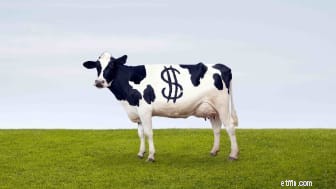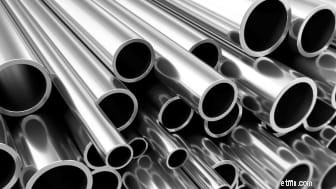
Børshandlede fonde (ETF) investerer i den schweiziske hærkniv. Du kan gøre næsten alt med dem:opbygge en porteføljekerne, bliv taktisk i forsvaret, tag et moonshot eller endda profit, når markedet falder. Og vi holdt alle disse mål og mere i tankerne, da vi byggede vores liste over de 22 bedste ETF'er at købe for 2022.
Hej. Hvis 2020 og 2021 har lært os alle noget, er det, at vi skal være forberedte.
For at være klar:De bedste ETF'er for 2022, ligesom i hvert foregående års liste, inkluderer optimistiske fonde designet til at drage fordel af de forskellige trends, Wall Streets analytikere og strateger ser ude i det kommende år. Det gælder både aktier, obligationer og råvarer.
Men selvom du og jeg måske tillægger vilkårlige kalenderdatoer som 1. januar og 31. december en vis betydning, gør markederne det bestemt ikke. Derfor inkluderer vi også typisk et par fonde, der kan gå hvor som helst, der ville være lige så velegnede i 2022, som de ville være i 2012 eller 2032. Vi forsøger også at give investorerne et par ildslukkere – defensive muligheder, som du måske kun kan bruge, når stormskyer sænker sig over Wall Street.
Så hvad siger krystalkuglen om 2022? Et væld af strateger forudsiger beskedne gevinster i de høje enkeltcifrede:Goldman Sachs siger, at S&P 500 vil ramme 5.100. RBC siger 5.050, og det samme gør LPL Financial midt i deres sortiment – og Kiplinger's Personal Finance Redaktør Anne Kates Smith er enig med dem. "Tænk et sted lidt over 5.050 for S&P 500 eller nord for 39.000 for Dow Jones Industrial Average," siger hun i vores 2022-udsigt. (S&P 500 ligger i øjeblikket på 4.649.)
Wall Street er dog ikke enstemmigt bullish. BofA opfordrer til et lille fald til 4.600 inden udgangen af 2022, mens Morgan Stanley mener, at vi vil være hele 5 % lavere, på 4.400.
Og naturligvis er der ingen, der forventer, at præstationen kommer i en lige linje, og de forventer heller ikke, at alle sektorer bidrager ligeligt til disse gevinster eller tab. Værdi- og cykliske sektorer er populære opfordringer igen for 2022, selvom analytikere er lidt skæve over, at omicron COVID-varianten vil fungere som endnu en hindring i genopretningen.
Her er de 22 bedste ETF'er at købe for 2022 . Hvis det virker som et haglgevær af et udvalg, er det med vilje. Investorer jagter måske en bred vifte af mål i det kommende år – hver af disse ETF-valg repræsenterer en top-flight måde at nå dem på. Det er vigtigt, at dette ikke er et forslag til at opbygge en portefølje af alle 22 valg, men vi mener, at der er mindst et par fonde for hver type investor. Så læs videre og find ud af, hvilke velbyggede ETF'er bedst matcher det, du forsøger at opnå i 2022.
Data er pr. 21. december. Udbytteafkast repræsenterer det efterfølgende 12-måneders afkast, som er et standardmål for aktiefonde.

Vi starter vores kig på 2022's bedste ETF'er med en fond, som de fleste læsere sandsynligvis er klar over:Vanguard S&P 500 ETF'en (VOO, $425,69). Og du kan satse din bunddollar på, at vi vil føre med en S&P 500-sporende indeksfond på hver årlig liste inden for en overskuelig fremtid.
Når alt kommer til alt, kan deres jævnaldrende bare ikke følge med.
Hvert år holder vi øjnene på S&P Dow Jones-indeksets årsrapport om aktivt forvaltede fonde, selvom det lyder som en slået rekord. Fra den seneste rapport i april, der opsummerer 2020:
"[Aktivt forvaltede] fonde med store kapitalandele fortsatte, hvor de slap det foregående årti – for den 11. på hinanden følgende etårige periode klarede størstedelen (60%) sig dårligere end S&P 500."
Hvis dette var college-fodbold, ville vi stille spørgsmålstegn ved, om det overhovedet er en rivalisering længere.
Men tænk over det:I 11 år i træk kan størstedelen af erfarne fagfolk – eksperter, der bliver betalt og godt betalt, for at vælge aktier til deres kunder – som slynger produkter med store selskaber, ikke slå benchmark. Så hvilken chance tror du, at din gennemsnitlige investor, som måske har en time hver uge til at afsætte til at gennemgå deres portefølje, har for at løbe fra indekset?
Desuden slår S&P 500-indeksfonde endda andre store indeksstrategier ud. Med blot et par uger til 2021 klarede VOO sig 80 % bedre end sine jævnaldrende i Morningstar-kategorien og havde tjent hele fem ud af fem stjerner fra Morningstars vurderingssystem.
For så vidt angår selve produktet:Vanguard S&P 500 ETF udsætter dig for de 500 hovedsageligt amerikanske selskaber, der handler på store amerikanske børser. Når nogen siger "markedet", mener de normalt S&P 500.
Bare husk:Dette er ikke en perfekt afbalanceret fond, der giver dig lige stor eksponering til hver af markedets 11 sektorer. I øjeblikket ligger teknologiaktier i top med næsten 30 % af fondens aktiver; sammenligne det med forsyningsselskaber, fast ejendom, materialer og energi, som hver tegner sig for mindre end 3 %. Det er også værd at bemærke, at S&P 500 udvikler sig med den amerikanske økonomi – i de sene årtier var energi og teknologi ligeværdige, pr. indflydelse på indekset.
Og fordi S&P 500 er markedsværdivægtet, betyder større virksomheder også mere for dens præstationer. Apple (AAPL) og Microsoft (MSFT) tegner sig alene for 13 % af VOO's aktiver. De nederste 50 beholdninger tegner sig for kun mere end 1 %. Det betyder, at du er i en vis risiko, hvis investorer "roterer" ud af stærkt vægtede standouts såsom Apple, Microsoft, Amazon.com (AMZN) eller Tesla (TSLA).
Selv med disse risici har investorerne dog længe gjort det godt ved at investere i indekset – og med 0,03 % i årlige udgifter er der ingen billigere måde at gå til. Derfor hører VOO til blandt vores 22 bedste ETF'er at købe for 2022.
Lær mere om VOO på Vanguard-udbyderens websted.

En anden "rivalisering", der har været temmelig skæv i mere end et årti, har været vækstens dominans over værdien – inklusive hvad der ser ud til at være endnu en sejr for vækst i 2021. Men for andet år i træk kræver et betragteligt antal strateger en renæssance i underprisaktier.
"Tidligere i 2021 begyndte aktier i virksomheder, der var bundet til den økonomiske cyklus - bredt kategoriseret som værdiaktier - at klare sig bedre end vækstaktier, som dominerede under pandemien, da efterspørgslen efter teknologi steg. Den handel vendte efter Delta-varianten satte opsvinget i tvivl." siger Matt Peron, forskningsdirektør hos Janus Henderson. "Men hvis BNP fortsætter med at vokse, som vi forventer i 2022 (på trods af kortsigtede tilbageslag) og renterne bliver tommer højere, kan værdiorienterede sektorer som finans, industri, materialer og energi igen tage føringen."
Derfor har vi, midt i et væld af fonde, der faktisk brander sig selv som "værdi"-fonde, valgt Vanguard High Dividend Yield ETF (VYM, $109,20) for at repræsentere large cap-værdi blandt vores bedste ETF'er for 2022.
Vanguards VYM har et ret ligetil mål:Invester i virksomheder, der har over gennemsnittet afkast. Og den lever op til sit navn og tilbyder et aktuelt udbytte på 2,8 %, der er mere end det dobbelte af S&P 500 på nuværende tidspunkt.
Men ved at gøre det har Vanguard High Dividend Yield ETF også en eksponering, der er højere end gennemsnittet i kategorien, til tre af de førnævnte værdisektorer, der går ind i 2022:finansielle tjenesteydelser (23 %), energi (8 %) og materialer (4 %). Den fjerde – industrier med 10 % af aktiverne – er kun to procentpoint under kategorinormen.
Peron tilføjer, at i perioder med stramning af pengepolitikken, som det, der forventes af Federal Reserve i år, "bliver investorer ofte værdiansættelsesfølsomme, hvilket kan øge tiltrækningen af værdiaktier på kort sigt." Det ville også være gode nyheder for VYM's portefølje, som er billigere end sine konkurrenter både ud fra pris-til-indtjening (P/E) og pris-til-cash flow-målinger.
Lær mere om VYM på Vanguard-udbyderens websted.

Mens vores bedste ETF'er for 2022 ser helt anderledes ud end 2021's udgave, var der nogle få udvalgte fonde tilbage – og ingen fond har haft mere udholdenhed på vores årlige liste end Distillate U.S. Fundamental Stability &Value ETF (DSTL, 44,75 USD).
Det er delvist fordi DSTL gør tingene anderledes. Og også fordi det får resultater.
Mange værdi-ETF'er er afhængige af målinger som P/E, pris-til-salg (P/S) og pris-til-bog (P/B) for at bestemme, hvad der ser underpris ud. Men Distillates fond fokuserer på frit cash flow (FCF, det kontante overskud, der er tilbage, efter at en virksomhed har foretaget de nødvendige kapitaludgifter for at opretholde virksomheden) divideret med virksomhedens værdi (EV, en anden måde at måle en virksomheds størrelse på, der starter med markedsværdi, derefter faktorer i skyldig gæld og kontanter).
Thomas Cole, administrerende direktør og medstifter af Distillate Capital, forklarer, at fonden ser på FCF/EV, fordi mens virksomheder kan "justere" visse tal, såsom indtjening og indtjening (som igen kan rode med værdiansættelsesmetrikker baseret på disse tal) , "du kan ikke forfalske kontanter."
Destillate U.S. Fundamental Stability &Value ETF starter med 500 af de største amerikanske virksomheder, og luger derefter dem ud, der er dyre baseret på deres definition af værdi, såvel som dem med høj gæld og/eller volatile pengestrømme. Resultatet er en portefølje, der ikke ligner en traditionel værdifond – mens industrier er store med 22 % af beholdningerne, er DSTL også tunge inden for sundhedspleje (23 %), teknologi (21 %) og forbruger cykliske (14 %) navne . For pokker, Morningstar ser ikke engang Distillates ETF som en stor værdifond, men en stor blandingsfond i stedet.
Coles tilgang til værdi får ham også til at se det nuværende marked meget anderledes end de fleste af os.
"Vores overordnede observation er, at markedet ikke er så snigende dyrt på baggrund af det frie cash flow, det genererer, end det ville være, hvis man hvilede sine konklusioner på mål som P/E og P/B," siger han.
Ydeevnen ser også frygtelig rosenrød ud gennem Coles linser. DSTL er på vej til at overgå de fleste af sine jævnaldrende i 2021. Og siden starten den 23. oktober 2018 har fonden ikke kun slået de tre ETF'er med højest værdi med et gennemsnit på 41 procentpoint – den har slået S&P 500 med solide 10 point at starte op.
Lær mere om DSTL på Destillate Capital-udbyderens websted.

Investorer ville også gøre klogt i at udvide deres tilbudsjagt langt uden for rammerne af store aktier. For mange Wall Street-prognoser er mindre virksomheder meget mere tiltalende.
"Mens store og mellemstore virksomheder handler med en præmie på 35-40 % i forhold til historien, handler small caps nu på linje med historien," siger Jill Carey Hall, aktie- og kvantstrateg for BofA Securities. "Ud over at være de billigste, er de også en bedre diversificering. ... Mens aktivklassens afkast er vokset mere korreleret i forhold til 20 år siden, er Russell 2000 mindre korreleret med andre aktivklasses afkast i gennemsnit end Russell MidCap eller S&P 500 både over de sidste tre år og de sidste par årtier."
Vores bedste ETF'er at købe for 2022 inkluderer to måder at angribe small-cap værdi på. Først ud:Pacer US Small Cap Cash Cows 100 ETF (KALV, $42,34).
Pacers CALF betragter værdi på nogenlunde samme måde, som Destillates DSTL gør, ved at bruge FCF/EV – eller "frit pengestrømsudbytte" – som dets foretrukne mål. Specifikt udvælger CALF de 100 bedste S&P SmallCap 600-aktier efter frit cash flow-udbytte, vægter dem derefter med metrikken og rebalancerer porteføljen hvert kvartal. For balance er beholdningen begrænset til en vægt på 2 % ved hver rebalancering.
Igen, Pacer US Small Cap Cash Cows 100's nuværende beholdning er ikke, hvad du kunne forvente af en værdifond. Mest slående:Næsten halvdelen af ETF'ens vægt er i skønsmæssige forbrugeraktier; industrier er den eneste anden tocifrede vægt på 13%.
Det er svært at finde mange ETF'er, der er lige så elskede af fondsbedømmere som CALF. Pacers fond tjener i øjeblikket hele fem stjerner fra Morningstar, og det uafhængige analysefirma CFRA lister fonden blandt de højest scorende small-cap aktie-ETF'er, den dækker.
Lær mere om CALF på Pacer ETFs udbyderwebsted.

Et andet CFRA-forslag til at skrælle small-cap-værdien orange er Roundhill Acquirers Deep Value ETF (DEEP, $35,81), og der er intet subtilt ved denne.
DEEP målretter mod "dybt undervurderede små- og mikrokapitalaktier." Det gør det ved at bruge "The Acquirer's Multiple" – en værdiansættelsesmåling offentliggjort i 2014 af Tobias Carlisle, grundlægger og administrerende direktør for Acquirers Funds. Acquirer's Multiple fokuserer også på virksomhedsværdi, men i stedet for FCF dividerer den med driftsindtjening.
Siger webstedet dedikeret til dette multiple:
"Beregning af driftsindtjening oppefra og ned standardiserer metrikken, hvilket gør en sammenligning på tværs af virksomheder, brancher og sektorer mulig, og ved at ekskludere særlige poster - indtjening, som en virksomhed ikke forventer vil gentage sig i de kommende år - sikrer man, at disse indtjening kun er relateret til operationer."
Porteføljen med 100 aktier har en gennemsnitlig beholdning på lige under 1 milliard USD i markedsværdi. Ifølge Morningstar er 79 % af fonden i mikrokapitalaktier, 20 % er i small caps og de resterende 1 % er i mids. Og hver bedrift får lige stor indflydelse på ydeevnen, da de er sat til en vægt på 1 % stykket ved hver kvartalsvise rebalancering. Topbeholdninger på vej ind i 2022 omfatter procesautomatiseringsspecialisten Hollysys Automation Technologies (HOLI) og udbyderen af beskyttelsestøj Lakeland Industries (LAKE).
Sektorvægtningerne er lidt mere skæve. Porteføljen er domineret af finansielle (30 %), forbrugsgoder (24 %) og industrier (22 %). Det efterlader mindre end en fjerdedel af resten af fonden til at blive delt mellem syv andre sektorer.
Ikke overraskende kan denne aggressive tilgang gå sidelæns; Roundhills fond blev trampet ned af både brede small-cap- og værdiindekser i 2019 og 2020, for eksempel. Men den har overgået i varierende grad i hele 2021.
Bare bemærk, at DEEP ikke er billigt. Dens 0,80 % i årlige udgifter er langt over normen for din gennemsnitlige indeksfond.
Lær mere om DEEP på Roundhill-udbyderens websted.

En næsten universel indrømmelse er, at virksomhedernes Amerika vil have meget sværere ved at finde vækst i 2022 sammenlignet med 2021, i høj grad fordi sammenligninger fra år til år ikke vil være nær så lette.
Det betyder, at investorer bliver nødt til at være mere selektive, og for mange strateger lægger det øget vægt på "kvalitetsfaktoren".
"I tidligere cyklusser, hvor rentekurven er fladet ud, har påvirkningen af aktier set investorer søger kvalitetsvirksomheder, der kunne overleve et forestående rentechok," siger William Davies, vice-global chief investment officer hos Columbia Threadneedle Investments, som bemærker, at for ham, kvalitet omfatter solide balancer og stærke konkurrencefordele. "Når vi går ind i 2022, har vi set rentekurven blive stejlere, fladere og stige hen over kurven igen, og det har ført til et mere blandet scenarie med hensyn til, hvad der fører markedet. … De virksomheder, vi kan lide – kvalitetsvirksomheder med solide balancer og konkurrencemæssige fordele – har en bedre chance for at klare volatilitet."
iShares MSCI USA Quality Factor ETF (QUAL, $141,72) er en af de største ETF'er med fokus på kvalitetsfaktoren. QUAL har i øjeblikket en fordeling på ca. 75/25 af store og mellemstore aktier, der kan prale af positive fundamentale faktorer såsom højt afkast på egenkapitalen, stabil indtjeningsvækst fra år til år og lav finansiel gearing.
Teknologifirmaer som Apple og Microsoft er i øjeblikket i top med 28 %, selvom iShares MSCI USA Quality Factor ETF også giver tocifrede vurderinger til sundhedspleje, skønsmæssig forbruger, kommunikationstjenester og økonomi. Men ligesom mange fonde fokuserede på en række grundlæggende målinger, kan disse sektorvægte ændre sig voldsomt over tid.
Alligevel ser QUAL ud til, at det kunne være en af de bedste ETF'er at købe for 2022 for investorer, der ønsker at forankre deres portefølje med blue-chip aktier, der har skudsikker økonomi. Især hvis de kan lide en handel:Udgiftsforholdet på 0,15 % underbyder 93 % af ETF's ligestillede.
Lær mere om QUAL på iShares-udbyderens websted.

En af de mest fremtrædende tendenser i de seneste par år har været et skift i retning af at prioritere kriterier for miljø, social og virksomhedsledelse eller ESG. Investorer, der er bekymrede for alt fra bæredygtig praksis til minoritetsrepræsentation i virksomhedens bestyrelseslokaler, kræver ændringer.
Dette udmønter sig i et sandt investeringsudfald. Ifølge BofA Securities gik $3 ud af hver $10 i global aktieindstrømning (og $1 af hver $10 i global obligationstilstrømning) til ESG i omkring tre fjerdedele af 2021. På længere sigt bemærker BlackRock, at ESG ETF-aktiver under forvaltning er vokset med mere end 300 % årligt i løbet af de seneste fire år.
Muligheden er langt fra forbi.
"Stærke beviser tyder på, at interessen for ESG-produkter og -løsninger lige er begyndt," siger Brad McMillan, investeringschef for Registered Investment Adviser og uafhængig mægler-forhandler Commonwealth Financial Network. "På investorsiden forventes en anslået formueoverførsel på 73 billioner dollars at finde sted i løbet af de næste 25 år. Meget af denne rigdom vil falde i hænderne på to demografiske grupper:kvinder og millennials. Begge grupper har en stor interesse i bæredygtig investering. I i fremtiden vil deres betydelige kapital sandsynligvis blive repositioneret mod ESG-sektorer."
Du kan altid vælge individuelle aktier, som dem i Kiplingers ESG 20. Men en af de nemmeste og billigste måder at investere på med et øje mod ESG er en simpel indeksfond:iShares ESG Aware MSCI USA ETF (ESGU, $105,29).
ESGU følger MSCI USA Extended ESG Focus Index, der består af store og mellemstore aktier, som MSCI har fastslået har positive ESG-karakteristika. Indekset udelukker også virksomheder som våbenproducenter og tobaksvirksomheder, såvel som dem, der er "involveret i meget alvorlige forretningskontroverser."
Det, du får, er i virkeligheden en kernebeholdning med store selskaber. ESGU har i øjeblikket 320 aktier i porteføljen, herunder mange store S&P 500-komponenter som Apple, Microsoft og Nvidia (NVDA). Siden starten i slutningen af 2016 har ydeevnen heller ikke været meget anderledes end en S&P 500 tracker med et samlet afkast på 127 % mod 132 % for iShares Core S&P 500 ETF (IVV).
Den har også stadig nogle af de samme problemer som en S&P 500 – Apple og Microsoft har massive individuelle vægte på henholdsvis mere end 6 % og 5 %, og teknologisektoren dominerer med 30 % af aktiverne.
Desuden er det, der er "ansvarligt" for dig, muligvis ikke det samme som det, der er ansvarligt over for iShares, så du er måske ikke enig om fordelene ved nogle få, nogle eller mange af ESGU's besiddelser. Hvis det er tilfældet, skal du overveje disse andre ESG-fonde i stedet.
Lær mere om ESGU på iShares-udbyderens websted.

Vi vil skifte til at se på dele af markedet, begyndende med et populært valg for 2022:industrisektoren.
Industrier, som blandt andet omfatter producenter, byggefirmaer og en række transportvirksomheder, har en tendens til at klare sig godt, når økonomier ekspanderer, og når inflationen bliver varm.
"Den industrielle økonomi er positioneret til at præstere stærkere i længere tid, med industriproduktionen, der forventes at være bedre end det langsigtede gennemsnit i FY22," siger Stifel-analytikere i deres 2022-lookahead. "Efterspørgselssiden forbliver sund, og kombineret med forsyningskædens begrænsninger bør den opretholde industriel produktion på 4 % eller bedre."
Lov om infrastrukturinvesteringer og jobs på 1,2 billioner dollar, der blev vedtaget i november, sætter noget ekstra pep i sektorens forventninger, ikke kun i 2022, men meget længere hen ad vejen.
Vi kan godt lide en almindelig Jane tilgang til industrier her, så vi tæller Industrial Select Sector SPDR Fund (XLI, $102,42) blandt vores bedste ETF'er at købe for 2022.
XLI besidder alle industriaktier i S&P 500, som i øjeblikket tæller 72. Det skæver naturligvis i første omgang mod store kapitalselskaber, og da fonden er markedsværdivægtet, har de største aktier de største vægte. Men i det mindste i øjeblikket har XLI ikke nogen iøjnefaldende enkeltaktie-overvægte. Railroad Union Pacific (UNP) is the only stock that commands more than 5% of assets, and United Parcel Service (UPS), Honeywell (HON) and Raytheon Technologies (RTX) each check in at more than 4%.
From an industry perspective, you're getting heaping helpings of machinery (19%), aerospace and defense (17%), industrial conglomerates (13%), and road and rail (12%). Air freight and logistics, professional services and airlines are among the various industries peppered in at single-digit weights.
We'll also note that XLI earns five out five stars from CFRA, which factors in forward-looking holdings-level analysis, relative performance and costs when compiling its ratings.
Learn more about XLI at the SPDR provider site.

As the infrastructure bill made its way through Washington, we recommended 12 infrastructure stocks to benefit from the bill – and one ETF: Global X U.S. Infrastructure Development ETF (PAVE, $27.87).
PAVE and its competitors are an example of how you have to look much deeper than an ETF's name. That's because many so-called infrastructure funds are rich in utility stocks, energy pipelines and other companies that seem less likely to directly benefit from the spending flowing from the IIJA.
But the Global X U.S. Infrastructure Development ETF, launched in 2017, was made with an eye toward America's crumbling infrastructure. Given the relative popularity of infrastructure spending across both political parties, a big outlay always seemed right around the corner – and PAVE was optimally designed to benefit.
PAVE holds nearly 100 stocks, most of which are from the industrial (72%) or materials (21%) sectors. Steelmaker Nucor (NUE), power management company Eaton (ETN) and construction materials firm Vulcan Materials (VMC) are a who's who of stocks that were first to mind as soon as President Joe Biden turned his attention to infrastructure spending.
As infrastructure dollars actually begin to be spent in 2022, PAVE's various components should feel a wind in their sails.
Learn more about PAVE at Global X's provider site.

In December, CFRA looked more favorably upon two sectors:technology and energy.
"CFRA thinks cyclical sectors will be boosted now that the omicron-induced selloff has likely run its course," says Todd Rosenbluth, CFRA's head of ETF and mutual fund research. He noted that colleague Sam Stovall, chief investment strategist, upgraded tech and energy from Marketweight (equivalent of Hold) to Overweight (equivalent of Buy), adding that the sectors' relative strength in 2021 positions them for potential outperformance in 2022.
But while technology is bursting with attractive ETF options, "Investors have fewer appealing choices in the energy sector," Rosenbluth says. "CFRA has four or five-star ratings on just two of 19 ETFs classified in the U.S. sector."
One of those is the Vanguard Energy ETF (VDE, $76.44), which is, like XLI, another straightforward sector fund. Unlike XLI, however, VDE is more than the S&P 500's large caps – while the 104-holding fund is still heavy in large companies (58%), another 31% of assets are in mid-cap stocks and the remainder is in smalls.
Like most cap-weighted energy funds, though, VDE is all about Exxon Mobil (XOM) and Chevron (CVX), which combine to account for a whopping 37% of assets. That means more than a third of the fund's daily performance can be chalked up to whatever these integrated energy majors do on a particular day.
But the largest impact on VDE will be whatever oil prices do. Rosenbluth notes that Action Economics forecasts West Texas Intermediate (U.S. crude oil) prices to average $83.26 per barrel by late 2022 thanks in part to rising global GDP. Stovall adds that OPEC's "continued strong supply discipline will likely maintain upward pressure on prices."
Learn more about VDE at the Vanguard provider site.

The other sector CFRA is hotter on as we enter 2022 is technology. And Todd Rosenbluth, the firm's head of ETF and mutual fund research, says investors are being gifted an entry point in tech as we enter 2022.
"The recent pullback in high-growth, technology-oriented names represents an enhanced buying opportunity heading into 2022 amid a rising interest rate environment where supply constraints and inflationary pressures are likely to ease," he says.
In most years, investors could do just fine investing in a basic sector index fund and calling it a day. Honestly, that could do the trick again in 2022.
However, you might want to focus your investments in a handful of related breakthrough technologies that are beginning to change the way the world operates. If so, consider the young TrueShares Technology, AI and Deep Learning ETF (LRNZ, $47.24), which came to market in March 2020 and is the smallest of our best ETFs to buy for 2022, at just $28 million or so in assets under management.
"Deep learning is a convergence of opportunity and capability," says Michael Loukas, principal and CEO of LRNZ issuer TrueMark Investments. "[Artificial intelligence] has been around for, technically speaking, like 100 years. And the reality is that the first real application of it was during World War II when you started to see the codebreaking machines. And the reason it hasn't advanced far beyond where we are right now is because there wasn't enough processing power.
"AI and deep learning, for it to work, you need data, you need algorithms, and you need processing power, the hardware. And we're finally at a stage where the algorithms, the data, the processors, are all keeping up with one another. It's going to change the world fundamentally."
The LRNZ portfolio, then, is a tight 23-stock collection of leaders in artificial intelligence, machine learning or deep learning platforms, algorithms or applications. While holdings span several industries, cybersecurity, software-as-a-service and biotechnology stand out. "Those three areas are really intertwined with the growth and option of deep learning."
Top holdings at the moment include cloud-based security company Zscaler (ZS), chipmaker Nvidia and online game platform Roblox (RBLX).
Learn more about LRNZ at the TrueShares provider site.

"Cybercrime is one of the most daunting and fastest-evolving threats facing companies today," say William Blair analysts Corey Tobin and Nabil Elsheshai. "It also presents an opportunity for investors to capitalize on the growth of the next generation of leading cybersecurity providers."
If you read the news, it's difficult to disagree. If there's anything we're often reminded of, it's that cybercriminals are constantly finding ways to access sensitive information from the government, the military and the private sector – and that the only way to fend them off is to pour more resources into cybersecurity.
That makes for some awfully attractive market forecasts.
"We anticipate that the cybersecurity software sector will grow at approximately 12% year-over-year in the intermediate term, reaching $220 billion by 2025, making it one of the fastest-growing segments of the software market, behind only customer relationship management and database management," Tobin and Elsheshai say.
ETF provider Global X cites Grand View Research estimates saying that growth will continue even farther into the future, to $370 billion by 2028. And that's a major selling point of their Global X Cybersecurity ETF (BUG, $31.67).
BUG is a pretty straightforward fund that invests in more than 30 cybersecurity stocks. Right now, top holdings include firewall specialist Palo Alto Networks (PANW), enterprise security firm Fortinet (FTNT) and broad cybersecurity provider Check Point Software (CHKP).
Learn more about BUG at the Global X provider site.

Real estate investment trusts (REITs), typically one of the market's best sources of equity yield, are shaping up to be among the more popular picks of strategists looking ahead to 2022.
"Real estate investments stand to benefit from a number of macroeconomic crosscurrents:the economy is recovering, which should lead to higher occupancy rates and REITs have historically been among the best performing assets during periods of higher-than-normal inflation," say Jason Pride and Michael Reynolds, the respective chief investment officer of private wealth and vice president of investment strategy at investment management firm Glenmede.
Indeed, S&P Global notes that during the majority of periods of significantly rising rates, REITs have either matched or beaten the S&P 500.
The Invesco S&P 500 Equal Weight Real Estate ETF (EWRE, $40.60) provides a small twist on the traditional sector look. That is, it takes the 30 REITs within the S&P 500, and rather than weighting them by market capitalization, it instead equally weights them at every rebalancing. Top holdings right now include self-storage facility operator Public Storage (PSA), telecommunications infrastructure play Crown Castle (CCI) and data center REIT Equinix (EQIX).
The upshot of this is that the ETF is less likely to tank because any one component suddenly unraveled. Of course, the flipside is that if a larger component takes off, EWRE won't benefit as much as a cap-weighted fund will.
Another bonus:Invesco's fund offers a larger yield than many of its peers in a sector that's already known for its dividend generosity.
Learn more about EWRE at the Invesco provider site.

The wide appeal of financial stocks – especially banks – as we enter 2022 isn't too difficult to understand.
An improving economy is generally good for financial activity, especially products such as mortgages and auto loans. And higher interest rates help banks enjoy better spreads between what they borrow at and what they lend at, fattening their bottom line.
"We believe investors should continue to [be] overweight U.S. banks, and three months into our 'buy the banks' call we feel even better about the positive [earnings per share] and valuation optionality from inflecting loan growth, cash redeployment and higher interest rates," says Christopher McGratty, analyst with Keefe, Bruyette &Woods (KBW). "Our preference is to own spread-based lenders with the [small and mid-cap stocks] offering the greatest relative value, while sooner/more frequent rate hikes could add 10% to 20% to 2023 [earnings] for many of our favorite asset-sensitive names."
You can find the lion's share of those names, including First Citizens BancShares (FCNCA), Signature Bank (SBNY) and Citizens Financial (CFG), in the SPDR S&P Regional Banking ETF (KRE, $68.86).
KRE holds more than 140 regional banks, and does so via a modified equal weighting system that ensures there's a thinner representation gap between super-regionals and small, local banks. That's how $81 billion PNC Financial (PNC) ends up being the No. 5 weight at 1.9% … four slots below top holding First Citizens, which is just an $8 billion company.
Compare that to the lopsided iShares US Regional Banks ETF (IAT), where PNC, Truist (TFC) and U.S. Bancorp (USB) combine to account for a whopping 37% of assets.
Learn more about KRE at the SPDR provider site.

Internationally speaking, developed-market equities – especially European stocks – have long been known for sporting much more attractive valuations compared to their U.S. counterparts. That remains the case today, but strategists also cite rebound potential as they look across the ponds.
"Globally, Europe and Japan were hit especially hard by the pandemic in 2021," says Ryan Detrick, chief market strategist for LPL Financial, the nation's largest independent broker-dealer. "But as COVID-19 cases potentially fall globally, those areas could be ripe for better economic growth in 2022."
Capital Group's European economist, Robert Lind, adds that "The major European economies may grow significantly faster [than the U.S.], in the 4.0% to 5.0% range, as the eurozone enjoys a delayed but now strong COVID rebound."
The iShares MSCI International Quality Factor ETF (IQLT, $38.58) provides diversified exposure to Europe, Japan and other developed markets while also filtering stocks by the same quality-factor metrics as QUAL.
The 300-stock portfolio is heaviest in developed Europe, which makes up half of the portfolio – and that's without accounting for an additional 14% exposure to the U.K. Japan is another 14% of assets, and the rest of the portfolio is spread across Canada, Australasia and developed Asia.
Both QUAL and IQLT are largely blue-chip funds, with the former's holdings averaging about $150 billion in market cap, and the latter closer to $60 billion. And as is the case for many European funds, IQLT yields more than its American cousin. But it's the attention to reliability and stability that might make IQLT one of the best ETFs for 2022.
Top holdings at the moment include Dutch semiconductor equipment manufacturer ASML Holding (ASML), Swiss pharmaceutical giant Roche Holding (RHHBY) and French luxury goods company LVMH (LVMUY).
Learn more about IQLT at the iShares provider site.

Here's a fun fact:In roughly three years, Kiplinger has been acquired by not one, but two U.K.-based companies.
And we promise that's not the motivation for this next pick.
While European equities are considered inexpensive at the moment, British stocks are downright cheap.
Mike Bell, global market strategist for J.P. Morgan Asset Management, said during summer 2021 that "U.K. valuations aren't just cheap when compared with other markets. They are also below their long-run average valuation since 1990." And little has changed since then.
"I think regionally the United Kingdom looks quite interesting. It is the cheapest market on a per-growth unit basis globally, and to me I think that there isn't a lot of long-term rationale for that dislocation, and I think that represents an opportunity for positive reversion," adds George P. Maris, co-head of equities, Americas, for Janus Henderson.
The iShares MSCI United Kingdom ETF (EWU, $32.24), then, could be one of the best ETFs to buy for 2022 – at least if Britain equities' value prices finally translate into returns after years of disappointing results.
EWU is a decently balanced collection of 85 stocks that sees six sectors currently weighted in double digits. Consumer staples (20%) is top of the list, but financials, healthcare, industrials, materials and energy all play significant roles in the portfolio. Top holdings include pharmaceutical name AstraZeneca (AZN), consumer products giant Unilever (UL) and spirits maker Diageo (DEO).
The average P/E of an EWU stock is less than 12 right now, and both P/S and P/B are under the category average as well. New investors are also getting twice the S&P 500's yield at 2.8% currently.
Learn more about EWU at the iShares provider site.

Most investors can give you the broad-strokes rundown on what risks they're taking when they chase growth via emerging markets (EMs). But rarely have they experienced as acute – and painful – an example as what China delivered in 2021.
Simply put, China cracked down on publicly traded companies, especially in the tech sector. In April 2021, Beijing forced Jack Ma's Ant Group, the country's largest payments provider, to restructure to more resemble a bank company – and then in September, numerous reports claimed China was planning on breaking apart Ant Group's app Alipay to be broken up. In early December, ride-sharing giant Didi Chuxing was pressured into delisting from the New York Stock Exchange and pursuing a Hong Kong listing. In between, Alibaba (BABA), JD.com (JD) and other online giants were slapped with large antitrust fines.
"I think for investors, this made them realize that they miscalculated the autocracy risk and government intervention risk in EMs," says Perth Tolle, sponsor of the Freedom 100 Emerging Markets ETF (FRDM, $32.76), which looks to sidestep this and other risks in emerging markets that can ultimately stifle economic growth.
You see, FRDM is a departure from the other best ETFs to buy for 2022 in that it's not market cap-weighted or equally weighted … but freedom -weighted.
The ETF's tracking index begins with a selection universe of 26 emerging countries. From there, minimum country-level market-cap requirements must be met. Then, using country-level data from the Cato Institute, Fraser Institute and the Friedrich Naumann Foundation for Freedom, countries are selected and weighted based on 76 different metrics of civic, political and economic freedoms, such as rule of law, freedom of the press, women's freedoms and government interference in private markets.
The result is a much different EM fund than many prominent ETFs that feature China and India heavily. As of late 2021, neither were featured – instead, Taiwan (21%), Chile (16%) and Poland (16%) were tops among 10 countries represented.
The Freedom 100 Emerging Markets ETF's lack of Chinese exposure specifically was a boon in 2021, as many China-specific ETFs lost more than 20% through late in the year, and broad EM funds with heavy EM exposure were dragged to negative returns. FRDM was up 2% with a little more than a week to go in 2021.
"We have always said that freer countries perform more sustainably, recover faster from drawdowns, use their capital and labor more efficiently and have less capital flight," Tolle says. "We got to test the second part (recovering faster) in the latter part of 2020; it passed that test and outperformed broad EM, EM ESG and EM ex-China. But in 2021, we really saw the more basic thesis, which is that personal and economic freedoms set the foundation for growth."
A growing investor realization of these tenets helped the Freedom 100 Emerging Markets ETF more than triple its assets in 2021, to more than $105 million at last check. And entering a 2022 in which many strategists have China as a big, fat question mark, FRDM takes at least one uncertainty off the board.
Learn more about FRDM at its provider site.

Bond investors are in for some serious challenges in 2022. Central banks all over the world are poised to tighten their monetary policy, and that includes the Federal Reserve here at home.
At its last policy meeting, the Fed said it was going to effectively double the pace of its tapering, which would put the end of its asset purchases in March, rather than mid-2022 as previously forecast. Meanwhile, the latest "dot plot" from December indicates that a majority of the Fed's members believe their benchmark interest rate will climb three times in 2022.
That, as well as expectations for slowing but still-higher-than-pre-COVID inflation, have several strategists recommending Treasury Inflation-Protected Securities (TIPS), which are U.S. government bonds that rise with inflation and decline with deflation.
"Barbelling credit with TIPS could add another real income stream, this time on the defensive side of a bond portfolio," say State Street Global Advisors strategists. "Because TIPS are backed by the full faith and credit of the U.S. government, they have low credit risk. Adding TIPS to a portfolio could help counteract some of the equity risk introduced by overweights to credit."
The SPDR Bloomberg 1-10 Year TIPS ETF (TIPX, $20.98) adds another level of defense by targeting shorter-maturity issues. TIPX's roughly 40 holdings have an average maturity of just less than five years, which is well under the category average of nearly eight years. As a result duration is 4.9 years, versus 6.8 for the category average. (Duration is a measure of bond-fund risk that implies for every percentage-point increase in interest rates, TIPX will decline 4.9%, and vice versa.)
TIPX is a painfully boring entry in our best ETFs to buy for 2022 – you obviously won't mint a fortune sitting in short-duration TIPS. But it should provide a measure of protection against persistent inflation, more than compensating you for the fund's marginally negative current yield.
* SEC-afkastet afspejler den rente, der er optjent efter fradrag af fondsudgifter for den seneste 30-dages periode og er et standardmål for obligations- og foretrukne aktiefonde.
Learn more about TIPX at the SPDR provider site.

If investors do want to squeeze yield out of the fixed-income market in 2022, several strategists suggest you go big or go home. That means delving into high-yield debt (read:"junk").
"One area of fixed income that is in reasonable shape is high yield," says Capital Group Fixed Income Portfolio Manager Kirstie Spence. "Although it's at the tighter end of its historical range, the yield is still a very substantial pickup both to investment-grade corporates, and also to U.S. Treasuries."
Furthermore, adds Gene Tannuzzo, global head of fixed income at Columbia Threadneedle, "We believe 2022 will be a strong year for 'rising stars' as many high-yield companies achieve investment-grade status. In an environment where price appreciation appears muted, rising star candidates could represent a rare opportunity for gains. Risk premiums between BB- and BBB-rated bonds still offer value and prices could rise as investors anticipate higher ratings."
However, Tannuzzo says, "it takes targeted fundamental credit research to identify these favorable credit stories ahead of ratings agency action." Thus, investors might be best-served with an actively managed touch – putting Fidelity High Yield Factor ETF (FDHY, $54.57) among our top ETFs for 2022.
Michael Cheng, who has served as lead manager since inception in June 2018, oversees a portfolio of some 425 below-investment-grade debt issues. Credit quality here is better than most peers, with 45% of assets in BB-rated bonds (the highest grade of junk), and another 48% in B-rated debt. Just 5% is in below-B bonds, versus the category average of nearly 15%.
This positions FDHY to potentially enjoy gains from "rising star" bonds while still offering an attractive SEC yield of more than 4% at present.
Learn more about FDHY at the Fidelity provider site.

Aside from junk, few other fixed-income categories are offering up yields above inflation. Among them? Preferred stocks.
Companies sometimes issue preferred stocks as another way to raise funds without diluting common-stock shareholders but also without packing on more debt. And they're often referred to as "hybrids" because they share characteristics with both stocks and bonds.
On the one hand, preferred stocks actually represent ownership in the company, and they trade on exchanges just like common shares. However, the income they produce is more like a bond's coupon payment – a set amount rather than a stock's dividend, which can grow over time. Also, preferred stocks tend to trade around a par value, like a bond, so you don't rely on them for growth the way you do common shares.
And the "preferred" moniker? That's because preferred shareholders actually have priority over common shareholders. A company can't cut the dividend on preferreds until they cut the commons. And in some cases, dividends are cumulative – if the company stops paying for any reason, they still must eventually pay all owed dividends to preferred shareholders.
Several ETFs provide access to preferreds, but among the best is the VanEck Preferred Securities ex Financials ETF (PFXF, $21.74).
PFXF was created in 2012, in the wake of the Great Recession, as one of several "ex-financials" funds meant to avoid the risks of the troubled sector. You see, most preferred funds are teeming with preferred stocks issued by banks, insurers and other financial-sector stocks – which naturally cratered as the financial crisis sent some operators into bankruptcy and sent others into existential jeopardy.
VanEck Preferred Securities ex Financials ETF refuses to hold any such preferreds. Instead, its 127 holdings come from industries such as utilities (28%), residential and commercial REITs (17%) and telecom (9%).
It's a safe assumption most investors don't think another financial crisis is imminent. But VanEck's fund is still relevant thanks to higher yields and lower costs compared to most of its peers. That has led it to outperform against most of the other major preferred funds over every significant time frame.
Learn more about PFXF at the VanEck provider site.

One last play to address both inflation and a return to the recovery is hard commodities, which the Wells Fargo Investment Institute (WFII) is bullish on heading into 2022.
"We are expecting another good year," says John LaForge, head of global real asset strategy for WFII. "The midpoint of our 2022 Bloomberg Commodity Index (BCOM) target is 15% higher than last Wednesday's closing price. If hit, this would be the third straight year of double-digit gains for the BCOM."
In short, Wells Fargo believes that commodities began a new bull super cycle – a period during which commodity prices largely move together in sync – in March 2020. Bull cycles average 17.5 years with an average 247% gain, and the current bull cycle has gained just 63% and is only 1.7 years old.
"To gain exposure to the Commodities bull super cycle, we recommend a broad basket of commodities," LaForge says, as "bull super cycles have been known to lift most commodity prices.'
Enter the Abrdn Bloomberg All Commodity Longer Dated Strategy K-1 Free ETF (BCD, $30.13). BCD provides investors with access to the performance of futures contracts for nearly two dozen commodities, from natural gas to aluminum to corn. Currently, exposure is heaviest in energy commodities (36%), followed by agriculture (28%), precious metals (17%), industrial metals (14%) and livestock (5%).
And as the name suggests, Abrdn Bloomberg All Commodity Longer Dated Strategy K-1 Free ETF doesn't send out a K-1 tax form each year, which is a blessing for investors that don't want the additional tax complexity. Instead, you'll get a Form 1099.
Learn more about BCD at the Abrdn provider site.

"Always have an escape plan."
Desmond Llewellyn's final line as Q in the James Bond franchise might have served many investors well during the 2020 COVID bear market. One of the best ways to avoid deep losses in stocks, of course, is to not be long stocks.
But that's counterintuitive to what most of us are trying to accomplish. Long term, it makes sense for most investors to stick with a buy-and-hold plan through thick and thin, collecting dividends along the way. If you hold high-quality stocks, they'll likely bounce back after any market downturn. Fleeing to cash, meanwhile, not only could keep you from enjoying a rebound if you time the market wrong, but could also deprive you of attractive "yields on cost" (the actual dividend yield you receive from your initial cost basis).
That said, the point of this list is to make sure you're prepared for whatever the market sends your way. And if you're both convinced a downturn is ever coming, and you want to actively protect your portfolio against it, one way you can do so without jettisoning your portfolio is to put a bit of money to work in a simple market hedge.
The ProShares Short S&P500 ETF (SH, $13.97), most simply put, goes up when the market goes down. More specifically, it provides the inverse daily return of the S&P 500, which means if the S&P 500 declines by 1% on Monday, SH will gain 1% (minus expenses, of course).
This is not one of the best ETFs to buy and hold throughout 2022, and certainly not forever. Instead, it's a tool to put to use, investing a small percentage of your portfolio in it if your market outlook is grim. By doing so, you can offset some of the losses that your long holdings might incur during a down market – like many investors were rewarded for doing in February 2020 when it became apparent that COVID-19 was going to hit the U.S. hard.
The natural risk is that if you're wrong, and stocks go up, your portfolio's gains won't be as robust as they might have been.
Again, if you're a buy-and-hold investor, you'll do great just staying the course. But if you revel in being more involved and want to fade potential downside in the future, SH is a straightforward, effective hedge.
Learn more about SH at the ProShares provider site.